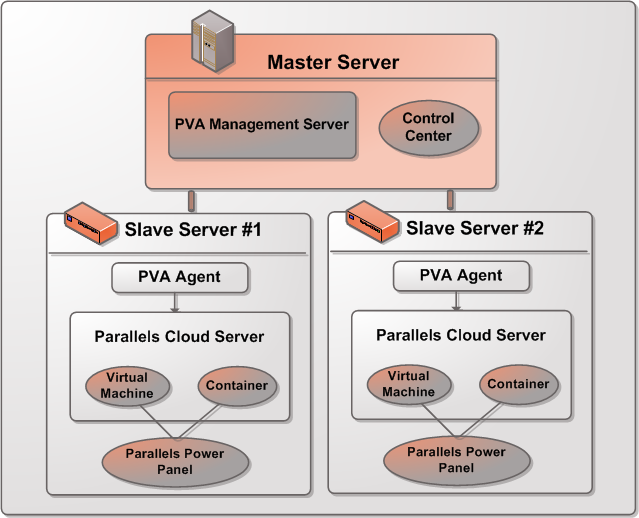Using Parallels Virtual Automation
Parallels Virtual Automation is a flexible and easy-to-use administration tool for managing servers with Parallels Cloud Server and virtual machines and Containers residing on these servers. Once you set up Parallels Virtual Automation, you can use it to connect to your Parallel servers with a standard web browser on any platform.
Parallels Virtual Automation includes the following components:
- PVA Management Server (or Master Server or Management Node ). A server (either physical or virtual) that ensures the communication between the server with Parallels Cloud Server (known as Slave Server ) and the Parallels Virtual Automation application. The Master Server keeps a database with the information about all registered Slave Servers.
- Control Center . A front-end to the Parallels Virtual Automation application. You see Control Center in the browser window when you log it to the PVA Management Server using Parallels Virtual Automation.
- PVA Agent . A special agent installed on a Slave Server and ensuring the interaction between the Slave Server and the Master Server. Without this component, you cannot register a Slave Server the PVA Management Server.
- Slave Server . A server running the Parallels Cloud Server software and hosting a number of virtual machines and Containers. You use Control Center to connect to the Slave Server to manage your virtual machines and Containers.
- Parallels Power Panel . A tool installed on the Slave Server and used for managing particular virtual machines and Containers by their end users.
Graphically, a typical system with Parallels Virtual Automation can be represented as follows.

|
|
 Feedback
Feedback
|